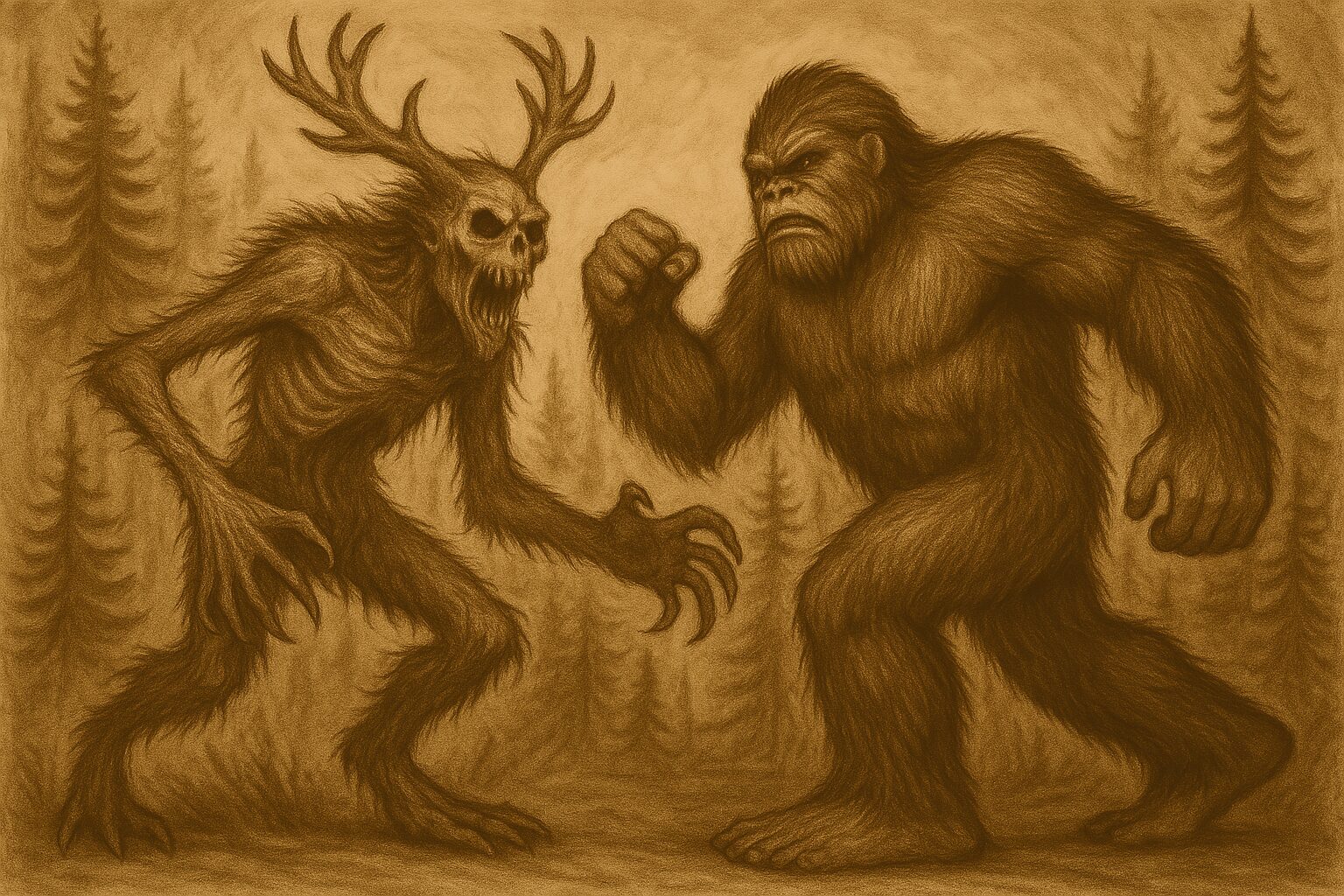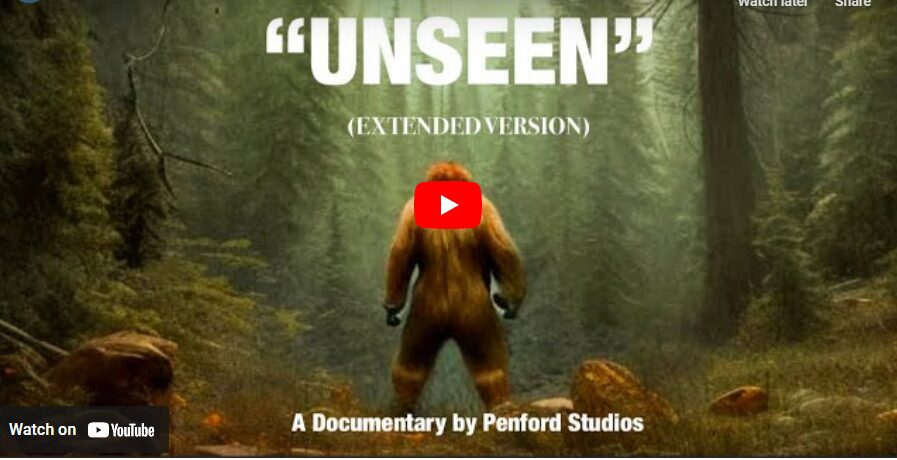
5. The Wendigo vs. Bigfoot
The Wendigo and Bigfoot are two of the most well-known cryptids in North American folklore, but they are vastly different in terms of origin, behavior, and mythology. While Bigfoot is often seen as a mysterious but neutral creature, the Wendigo is considered a malevolent, supernatural entity with a terrifying connection to cannibalism.
Origins & Mythology
Bigfoot
- Native American Traditions – Many tribes, including the Salish, Choctaw, and Modoc, describe Bigfoot as a guardian of the forest, sometimes a spiritual being that watches over nature.
- Modern Sightings – Bigfoot is often reported in remote forests, particularly in the Pacific Northwest, Appalachia, and Canada.
- Scientific Theories – Some researchers believe Bigfoot could be a relic hominid, possibly related to Gigantopithecus, an extinct giant ape.
Wendigo
- Algonquian Mythology – The Wendigo originates from Algonquian-speaking tribes, including the Ojibwe, Cree, and Mi’kmaq. It is described as a cannibalistic spirit that possesses humans, turning them into monstrous beings.
- Winter & Starvation – The Wendigo is closely associated with cold climates and desperation, appearing when people resort to cannibalism to survive.
- Supernatural Entity – Unlike Bigfoot, the Wendigo is often seen as a spiritual force, capable of possessing humans and growing larger the more it eats.
Physical Description
Bigfoot
- Height – Estimated between 6 to 10 feet tall.
- Appearance – Covered in thick fur, resembling a large primate.
- Behavior – Generally elusive, avoiding human contact.
- Sounds – Witnesses report deep growls, wood knocks, and howls.
Wendigo
- Height – Can be 15 feet tall or more, growing larger as it consumes human flesh.
- Appearance – Emaciated, with ashen skin, glowing eyes, sharp claws, and fangs.
- Odor – Said to reek of rotting flesh.
- Sounds – Known for blood-curdling screams and whispers that lure victims.
Behavior & Encounters
Bigfoot
- Avoids Humans – Bigfoot is rarely aggressive and tends to flee when spotted.
- Forest Guardian – Some legends describe Bigfoot as a protector of nature, keeping balance in the wilderness.
- Evidence – Reports include footprints, hair samples, and blurry photos.
Wendigo
- Predatory & Cannibalistic – The Wendigo hunts humans, particularly in cold, isolated areas.
- Possession – Some legends claim the Wendigo can infect people, turning them into cannibalistic monsters.
- Supernatural Powers – Said to be immensely strong, fast, and nearly impossible to kill.
Possible Explanations
Bigfoot
- Undiscovered Primate – Some researchers believe Bigfoot is a rare, undiscovered species.
- Interdimensional Being – Others suggest Bigfoot may be able to phase in and out of reality, explaining why it is so difficult to capture.
- Misidentified Wildlife – Skeptics argue that sightings could be bears, large humans, or optical illusions.
Wendigo
- Folklore & Cautionary Tales – The Wendigo legend may have originated as a warning against cannibalism.
- Psychological Phenomenon – Some believe Wendigo encounters are linked to mass hysteria or extreme starvation.
- Paranormal Entity – Others suggest the Wendigo is a spiritual force, appearing and disappearing mysteriously.
Who Would Win in a Fight?
If Bigfoot and the Wendigo were to battle, the outcome would depend on several factors:
- Strength – Bigfoot is physically powerful, but the Wendigo is supernaturally strong.
- Speed – The Wendigo is faster and more agile.
- Intelligence – Bigfoot is believed to be smarter, possibly using strategy.
- Durability – The Wendigo is harder to kill, requiring silver or fire.
Most theories suggest that Bigfoot would struggle against the Wendigo, as the Wendigo is more aggressive, supernatural, and nearly invincible.
Sponsored Products…
Your support Helps us pay for this site and conduct Analysis Research, everything helps… besides, you get Cool Bigfoot STUFF…
-
Quick View
Embroidered Bigfoot and Tree Washed Cotton Baseball Cap – Unisex
$15.00Select options This product has multiple variants. The options may be chosen on the product pageClearRoyal BluePinkBlackNavy BlueBurgandy - Quick View






